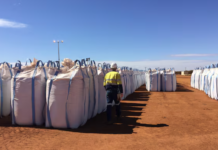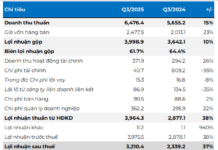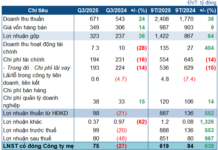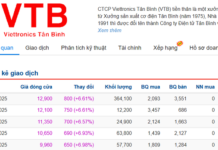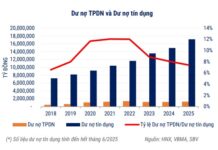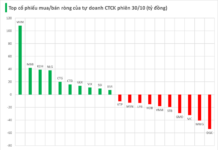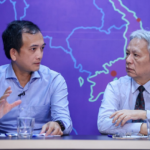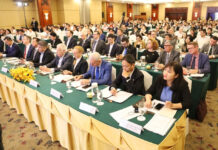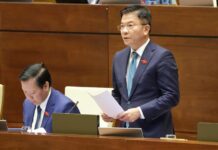According to the Electricity Authority (Ministry of Industry and Trade), the two-part electricity tariff structure comprises charges for registered capacity and actual electricity consumption. This is a departure from the current pricing mechanism, which is based solely on the amount of electricity consumed.
The current tiered pricing structure primarily reflects electricity consumption and does not accurately represent the cost of electricity for different consumer groups.
At a recent meeting with units under the Ministry of Industry and Trade regarding the two-part tariff structure, chaired by Minister Nguyen Hong Dien, Mr. Nguyen Anh Tuan, CEO of Vietnam Electricity (EVN), proposed conditions and a roadmap for implementing the two-part tariff structure, including the calculation method and eligible customers from a technical perspective.
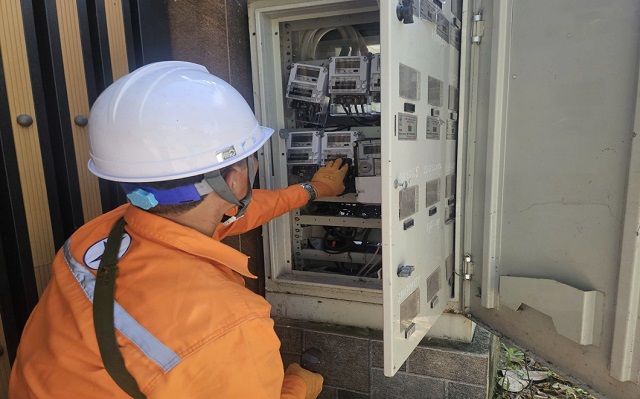
Initially, the two-part tariff structure will be applied to large industrial customers with a monthly electricity consumption of 200,000 kWh or more, connected at a voltage of 22 kV or higher (eligible for the Direct Power Purchase Agreement – DPPA as per regulations). It will not be applied to residential customers at this stage due to the requirement for a complete replacement of the metering system.
|
EVN’s leadership emphasized the necessity of transitioning from a one-part to a two-part retail electricity pricing mechanism to accurately recover the costs of electricity supply, including infrastructure (source and grid) and electricity consumption costs.
This approach enhances transparency and fairness among electricity consumers and accurately reflects their electricity usage within the system.
However, as this method has not been previously applied in Vietnam, it will significantly transform the electricity industry and electricity prices, necessitating thorough research, development, and impact assessments.
Implementation from January 1, 2026
Minister Nguyen Hong Dien stated that the meeting concluded with an agreement on the necessity of promptly implementing the two-part tariff structure (capacity and energy prices) as stipulated in the Electricity Law. Initially, it will be applied to large industrial customers with high electricity consumption from January 1, 2026.
To effectively implement the new tariff structure, the Minister directed the Electricity Authority, EVN, and the Electricity Corporations to focus on five key tasks.
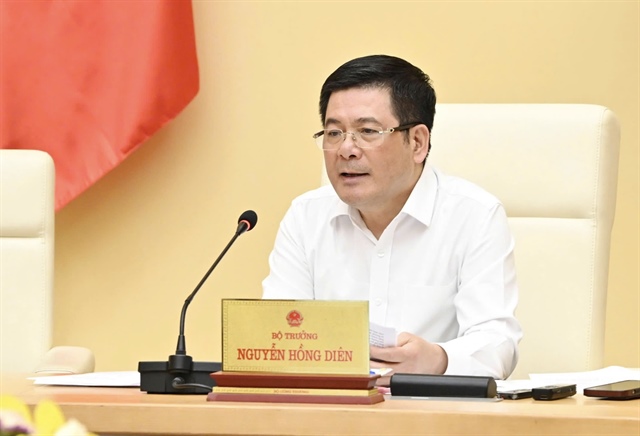
Minister Nguyen Hong Dien chairs the meeting on the two-part tariff structure. Source: MOIT |
First, the Electricity Authority, in coordination with EVN and relevant units, will review and finalize the proposal for the two-part tariff structure, submitting it to the ministry’s leadership and authorized agencies by October 15, along with an impact assessment report, comprehensive information, and a report to the government.
Second, the Electricity Authority and EVN will review, calculate, and propose amendments to Decision No. 14/2025/QD-TTg of the Prime Minister regarding the electricity retail price framework.
Concurrently, they will urgently develop a circular amending Circular 16 to regulate the method for constructing the price framework, running parallel to the roadmap for implementing the two-part tariff structure. EVN will take the lead in proposing the calculation method, ensuring the principle of “accurate and full cost recovery” for all expenses incurred in the process of electricity production and trading, including transmission costs.
Third, continue providing advice to the government (or the Minister) on deciding the group of consumers subject to the two-part tariff structure. Initially, this mechanism will be applied to large industrial consumers, with no exceptions within this group. From now until December 31, two invoices will be issued: one based on the current mechanism for actual settlement and the other based on the new calculation for reference and self-adjustment by customers.
Fourth, EVN will proactively engage consultants to develop management software for transparent and seamless operation. These tasks must be completed by October 20.
Fifth, alongside finalizing the proposal for the two-part tariff structure, a comprehensive communication plan should be developed from September 15, providing key information such as the Electricity Law, Resolution 70, the draft resolution of the government, and comparisons of electricity prices within the region and internationally. While the initial phase targets large industrial consumers and excludes those under social policies, the subsequent broader implementation will introduce peak and off-peak pricing, ensuring greater fairness.
“We no longer have the luxury of time to hesitate. This is the will and aspiration of the entire industry. With solid political and legal foundations in place, what remains is resolute action,” emphasized the Minister.
Tam An
– 10:38 09/09/2025
“EVN Takes a ‘Hit’ Rather Than a Loss”
As of late 2023, EVN faced a significant deficit in its finances, according to Trinh Quoc Vu, Deputy Director of the Electricity Authority under the Ministry of Industry and Trade. This deficit, commonly referred to as cumulative losses, amounted to a staggering 50,000 billion VND, excluding exchange rate differences. This discrepancy between revenue and expenses will inevitably require EVN to accurately reflect these costs in electricity prices.
Support Citizens to Embrace Apps and Smart Meters for Enhanced Monitoring
“Industry leaders from various power corporations and the Vietnam Electricity Group (EVN) have expressed their support for residents taking charge of their electricity bills. They encourage individuals to install their own meters and utilize apps to actively monitor and manage their electricity consumption and costs.”
Unraveling EVN’s Colossal Loss: A Request for Transparency on the $44 Billion Deficit Impacting Electricity Rates
“The feedback from various ministries and associations on Decree 72/2025, crafted by the Ministry of Industry and Trade, proposes supplementary regulations regarding costs not factored into electricity prices. This feedback is a crucial step in shaping the decree and ensuring a comprehensive approach to electricity pricing.”



